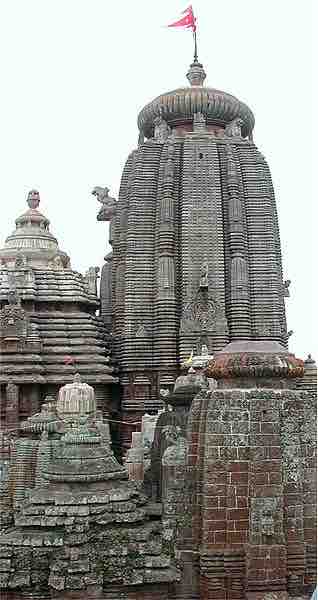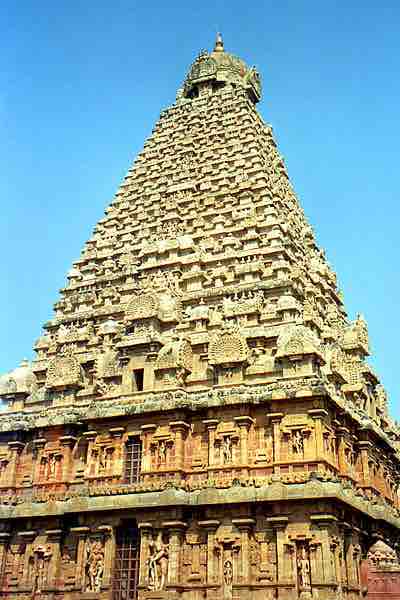Introduction: Hinduism and Hindu Art
Hinduism is the predominant religion of the Indian subcontinent. Dating back to the Iron Age, it is often called the oldest living religion in the world. Hinduism has no single founder and is a conglomeration of diverse traditions and philosophies rather than a rigid set of beliefs. Most Hindus believe in a single supreme God who appears in many different manifestations as devas (celestial beings or deities), and they may worship specific devas as individual facets of the same God.
Hindu art reflects this plurality of beliefs, and Hindu temples, in which architecture and sculpture are inextricably connected, are usually devoted to different deities. Deities commonly worshiped include Shiva the Destroyer; Vishnu in his incarnations as Rama and Krishna; Ganesha, the elephant god of prosperity; and different forms of the goddess Shakti (literally meaning "power"), the primordial feminine creative principle. These deities are often portrayed with multiple limbs and heads, demonstrating the extent of the god's power and ability. Hindu art is also characterized by a number of recurring holy symbols, including the om, an invocation of the divine consciousness of God; the swastika, a symbol of auspiciousness; and the lotus flower, a symbol of purity, beauty, fertility, and transcendence.
Hindu Temples
A Hindu temple generally consists of a garba griha ("womb chamber"), the inner sanctum in which the murti, or idol of the deity, is housed; a congregation hall; and sometimes an antechamber and porch. The garba griha is surmounted by a shikhara, or tower. Two main styles of temples exist in India: the northern Nagara style and the southern Dravida style.
The Nagara Style
In the northern Nagara style, the shikhara takes the shape of a curvilinear beehive. The temple is a square with a number of graduated projections in the middle of each side, giving a cruciform shape with a number of re-entrant angles on each side. The projections in the plan are also carried upwards to the top of the shikhara, giving a strong emphasis on vertical lines in elevation.

Lingaraj Temple, Bhubaneshwar, Orissa
The 11th century Lingaraj Temple is a fine example of the north Indian Nagara style of temple architecture, marked by its curvilinear, beehive-shaped shikhara.
The Dravidian Style
In the southern Dravidian style, the tower or gopuram consists of progressive smaller stories of pavilions. These temples were square in plan and pyramidal in shape; included porches (mandapams) and pillard halls (chaultris or chawadis); and contained tanks or wells for water to be used for sacred purposes or the convenience of the priests.

Brihadeeswarar Temple Gopuram Detail
The Brihadeeswarar Temple in Tanjore has the tallest Dravida style tower (216 feet) in India. The multiple stories are ornately carved.
History and Well-Known Temples
The earliest Hindu temples found in India date back to the Gupta period (ca. 320–550 CE); one of these is the Dashavatara Vishnu Temple in Deogarh in central India, built ca. 500 CE. The period between the 6th and 12th centuries was marked by the appearance of a large number of states, most of which were ruled by Hindu dynasties. This was a deeply productive and creative period for Hindu temple architecture, and many beautiful examples survive to the present day. Some surviving works include the monumental, rock-cut Kailashnath Temple (754–774 CE) dedicated to Shiva at Ellora in the western state of Maharashtra; the 11th century Brihadeeswarar Temple in Tanjore in the southern state of Tamil Nadu, which is India's largest temple; and the Sun Temple (1238–1250 CE) at Konarak in Orissa. Although many Hindu temples were destroyed during the period of Muslim rule in India (12th to 18th centuries), Hindu influence on Indian art and architecture has withstood the test of time and continues to shape works of art.